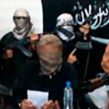
Foreign-Backed Jihadist Movement in Kazakhstan Now Threatens Nearby States as Well
Publication: Eurasia Daily Monitor Volume: 10 Issue: 97
By:

The jihadist network in Kazakhstan, inspired and financed by al-Qaeda, the Taliban and the Caucasus Emirate, has shifted from a loose grouping of largely autonomous jamaats into a unified movement that threatens not only Kazakhstan but Kyrgyzstan, Turkmenistan and portions of Uzbekistan as well, according to a new study prepared by Islam Tekushev, the director of the Medium-Orient Information Agency and editor-in-chief of the Prague-based Caucasus Times portal (caucasustimes.com/article.asp?id=21146).
Seven major terrorist actions occurred in Kazakhstan over the last two years, with dozens killed and even more wounded, Tekushev reports. The trend is disturbing because of “the high rate of economic growth and overall relative social stability” in this Central Asian republic, he notes. But the emergence of a terrorist underground should not have come as a surprise because Islamist groups have been organizing there for more than a decade, drawing on both domestic grievances against secular officials and the government-backed Muslim leadership and the support of international terrorist organizations.
Islamist groups in Kazakhstan are seeking to form an independent jihadist network like the one that exists in the North Caucasus and then to pursue the establishment of a sharia state. That the goals of the Kazakhstani and North Caucasian groups are so similar reflects the influence of Said Buryatsky, one of the main ideologues of the latter who visited Kazakhstan between 2004 and 2006. Buryatsky’s ideas are featured on many radical Islamist websites even now, and are often reflected in the thinking of Salafi groups in Central Asia.
Most radical groups in Kazakhstan are found in the western portions of that country, Tekushev says, where unemployment is high—approaching 90 percent among the young—where corruption and income differentials are large, and where radical Islamist visions can present themselves as the only serious opponents of injustice. Moreover, that part of the country is its propinquity to the North Caucasus and to the Karakalpak region of Uzbekistan where radical Islamist groups have become ever more active.
As in other places in the post-Soviet space, radical Islamism in Kazakhstan was initially associated with unregistered mosques and madrasahs, including the Aynabulak mosque in Almaty and the Kazakh-Arab University in Shimkent, both of which have now been closed, and the Saudi Arabian Center in Almaty, which still functions. The first Kazakh radicals appeared by 1994, Tekushev says, but the Kazakhstani media ignored them until 1999. Since then, the Islamists have grown, sparked government repression of them, and then grown more in response. And as that pattern repeated itself, the radicals have made violence a central part of their modus operandi.
Most Islamist cells in Kazakhstan are small and operate independently, with the exact numbers unknown. According to Kazakhstani officials, there are now more than 200 Islamist radicals in the country, a figure that is frightening in itself but one that understates the extent of the problem Astana now faces. According to one radical website two years ago, Islamist cells in Kazakhstan are seeking to keep their cells small—with fewer than five members each—and then network with other cells to be in a better position to fight the authorities (hunafa.com/2010/11/obrashhenie-kazaxstanskogo-dzhamaata-ansaru-d-din).
Some of the cells likely include people focused only on Kazakhstan, but others appear to have been taken over by external groups entirely, such as the Islamic Movement of Uzbekistan. Moreover, there are representatives of a variety of Islamist radical groups in Kazakhstan including al-Qaeda, the Islamic Movement of Eastern Turkestan, the Muslim Brotherhood, the Taliban and the Mujahidin of Central Asia, each of which may have a separate agenda as well as a common radicalism.
Not surprisingly, Tekushuv reports, “there are no exact figures on the extent of financial assistance to the Kazakhstani underground from the side of major terrorist centers.” But he says this assistance does not appear to be declining, suggesting that such funds are not seed money but rather part of a larger and controlling agenda.
At present, Tekushev argues, the jihadist underground in Kazakhstan is a well-armed “fundamentalist network organization consisting of numerous jamaats that are only weakly connected with each other but which are trying to create a single network with a clear hierarchy” to overthrow the current secular regimes in Central Asia and establish a sharia-based state there—the Central Asian Imamate.”
In short, the Islamists of Kazakhstan have chosen the North Caucasus model and consequently are likely to develop in much the same way. And that in turn has three likely consequences: First, the spread of Islamism there will proceed underground for some time before it is reckoned as a real threat. Second, the groups involved are likely to try to choose an emir at some point. And third, and most important, the Kazakhstani groups are a threat not only to Astana but to all of Central Asia.




